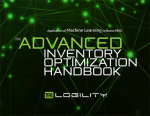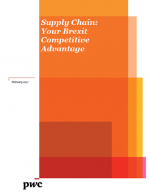The Inventory Optimization Handbook
This e-book explores Inventory Optimization and Multi-echelon Inventory Optimization strategies to help minimize costs while meeting customer service requirements, and provides examples of how to build these capabilities at your company.
Using Multi-echelon Inventory Optimization (MEIO) to Achieve Measurable Operational Improvements
Every supply chain team must balance inventory investment with service level performance.
Without proper balance, excess inventory accumulates throughout the supply chain and traps vital working capital.
Often companies attempt to manage inventory through a “rules of thumb” philosophy or their Enterprise Resource Planning (ERP) system.
This approach leaves companies vulnerable and unable to account for demand uncertainty, supply volatility and the interdependencies between nodes and tiers of
the network.
Inventory Optimization (IO) can have a huge financial impact by minimizing inventory and freeing up working capital while guaranteeing the right stock is on hand, when and where it is needed.
Nucleus Research found that companies applying IO tools can generally reduce inventory holdings in the range of 10 to 30 percent.
A form of prescriptive analytics, IO determines where and how much stock to hold to meet a designated service level while complying with specific inventory policies.
Through sophisticated algorithms, IO makes stocking recommendations to satisfy these needs.
Multi-echelon Inventory Optimization (MEIO) goes a step further to optimize stock locations and amounts across all sites and nodes in a supply chain network.
The right MEIO approach automates the stocking and replenishment process as well as enables rich “what-if” scenario analysis to analyze tradeoffs between costs and service levels.
It also uses machine learning to identify stocking patterns for seasonal products or new product introductions.
Through robust visualizations, MEIO dashboards and event driven notifications help improve usability, user adoption and user efficiency.
This e-book explains the importance of IO and MEIO strategies to help minimize costs while meeting customer service requirements, and provides examples of how to build these capabilities at your company.
What’s Related




Favorites





